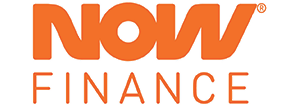
Rolling your car loan into the mortgage isn’t as simple as it sounds. As is the case with a lot of finance products there’s a few technicalities, and you might find you’re even taking out an entirely different product, or making significant tweaks to your home loan that can add to costs.
It’s not uncommon to find car loan rates a few percentage points higher than home loan rates. This is because banks see houses as more secure collateral than cars, so they can afford to offer a lower rate of interest. So, it seems like a no-brainer, right? Well, before diving in, there’s a few things to consider first.
How to roll your car loan into your home loan
There are essentially two ways to use your home loan to fund a car purchase: Using home equity or a top up, OR tapping into your redraw or offset account.
Whether you borrow against your equity or use a redraw facility, you will increase your regular repayments as you are adding to the pile of debt.
Whether you’re looking at a new car purchase, or to consolidate your existing car loan, both options are used to negate the need for a car loan, or pay out the residual amount.
Regardless of your scenario, it is wise to give your home loan lender a call and find out the next steps.
Option 1: Use a home loan top up or equity release
You can usually either increase your home loan size, called a top up, or create a separate loan that’s linked to the same property.
-
A home loan top up is usually housed within the existing home loan and features the same interest rate.
-
A home equity loan is often a separate product and uses the home equity as security, with a higher interest rate.
Both options generally rely on your home having equity, which means the value of the property minus how much you still owe on it. If you haven’t owned the home for very long, you might not have built much equity. Many lenders won’t let you go back above 80% loan-to-value ratio i.e. 20% equity.
In the case of a home equity release option, this could be an entirely different product and application process, and there might be establishment fees to pay. However this could come with the benefit of different loan terms, interest types, and the flexibility to pay it off at a different pace to your home loan.
A key benefit of a home loan top up is that you can opt to have it paid into your offset account, if you have one, meaning you only pay interest on this extra amount once it’s drawn down.
Option 2: Use your redraw or offset funds
If you have a redraw facility and have paid extra, chances are the extra repayments have gone into your redraw facility and can be drawn down to pay for things like a vehicle.
If you have an offset account with sufficient funds, you can also draw down on this to fund a car purchase, help pay off your existing car loan, or use it as part-payment for a new car.
Using funds in your redraw usually requires notice given to your lender, and there could be a small fee. You might also be restricted as to how much you can draw down.
An offset account is entirely your money, but they do often attract extra fees or an interest rate premium, so aren’t considered a ‘free’ add-on to your home loan.
Whether you use an offset or redraw, you will likely end up paying more interest on the home loan, as those funds are now diminished, and means you’re paying interest on a higher amount.
Advantages of consolidating your car loan into the mortgage
Potentially lower interest rate
Home loans often have much lower interest rates than car loans, meaning the interest portion on the car loan will be less, which can result in some savings. This is because as the old saying goes ‘safe as houses’, and the lender will likely look to your house as a more secure form of asset than a vehicle.
One repayment
Juggling a lot of debt and bills can be stressful. By rolling what’s likely your second-biggest debt into your biggest, that results in one neat repayment that could be easier to stay on top of.
Equity often requires no effort
There are two parts of equity - what you’ve paid into the home loan, and how much the home has appreciated in value. The latter usually requires no effort on your behalf, as if you hold the property for a number of years, it might have appreciated in value. This means you can draw down on this equity and make it usable.
Disadvantages of consolidating your car loan into the mortgage
Could be more interest paid over a longer term
Car loans are often much shorter than home loans, usually 3-7 years, compared to 25-30 years on a mortgage. This could make the higher interest rate on a car loan more palatable.
$30,000 borrowed over 5 years at 7% p.a. equates to $5,642 total interest paid. Compare this to 5.00% p.a. over 30 years, which equates to $18,537 paid.
This scenario can make it all the more important to get ahead on your mortgage by making extra repayments where possible, and consider options such as an offset account or redraw facility.
Often another product and extra fees
As mentioned consolidating your car loan into your mortgage generally relies on your home having equity. To use that equity, you usually need to borrow against it, which could mean you’re actually using another product. Establishing another loan product could mean another establishment fee, or having to value your property again to assess the equity in the home.
The ‘other’ product could also be a home equity loan, which is often paid as a lump sum to pay off your car loan, and is usually paid interest-only. This product often attracts its own higher interest rate.
Risk of securing car loan against house
Rolling your car loan into the mortgage to secure a lower interest rate often means you are now securing the car loan against your home. Failure to pay off this loan amount could jeopardise your home as the lender will look to recoup costs in case you default.
Photo by Luke White on Unsplash




